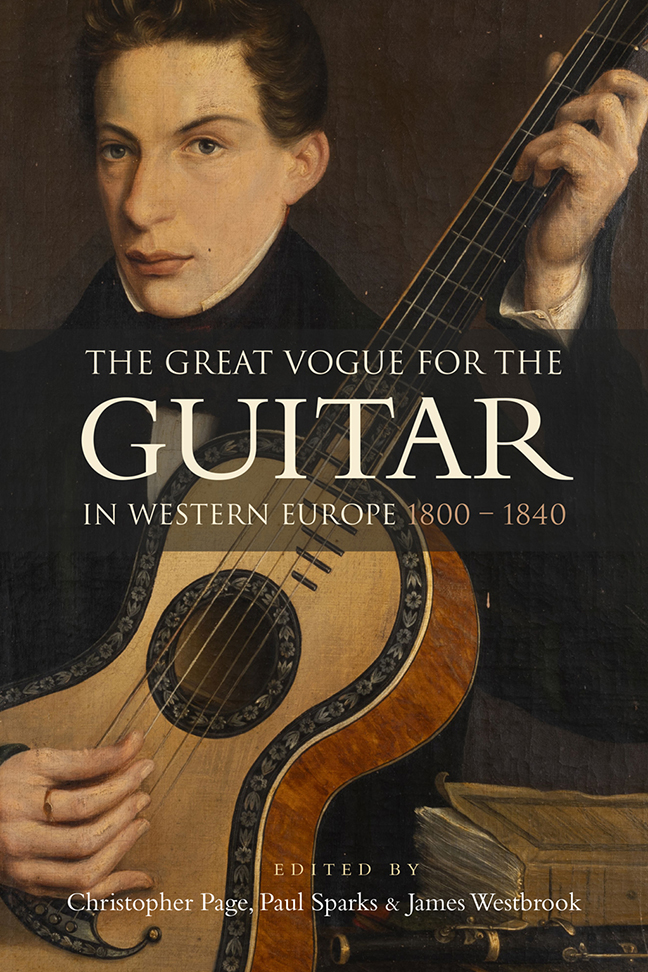Book contents
- Frontmatter
- Dedication
- Contents
- List of Illustrations
- Music examples
- The editors and the contributors
- Foreword
- Acknowledgements
- List of Abbreviations
- Introduction: The Great Vogue for the guitar
- I Contexts
- II The repertoire and its composers
- Appendix: A note on string-making
- Glossary of guitar terms
- Select Bibliography
- Index
11 - Ferdinando Carulli (1770–1841)
Published online by Cambridge University Press: 10 January 2024
- Frontmatter
- Dedication
- Contents
- List of Illustrations
- Music examples
- The editors and the contributors
- Foreword
- Acknowledgements
- List of Abbreviations
- Introduction: The Great Vogue for the guitar
- I Contexts
- II The repertoire and its composers
- Appendix: A note on string-making
- Glossary of guitar terms
- Select Bibliography
- Index
Summary
Into the favoured environment of Naples, specifically the via Nardones, near the Palazzo Reale, Ferdinando Carulli was born on 9 February 1770, the last of six children. His parents were Michele Carulli and Patrizia Federici, from a wealthy and cultured family. The father, a jurist and man of letters from Bari, was the younger brother of the famous Giovanni Giuseppe Carulli, a significant official of the ecclesiastical court of Naples and a man of letters himself. Michele held important state posts in Turin, Rome and Lyon, and was the author of poems and two librettos for musical intermezzos.
Early days in Naples and Livorno
Ferdinando took his first lessons in music from an ecclesiastical amateur who played the cello, and at about the age of 16 he took up the guitar. He reveals this himself in the ‘Lettera dell’Autore a Suo Figlio’ in the Méthode complette de guitarre ou lyre op. 27, published in 1810 (or possibly 1811): ‘I cannot assure you, my dear friend, that my way of playing is the best, but I will only tell you that I formed it after twenty-four years of hard work.’ This suggests that Carulli developed his own quite particular technique. It was only during the last twenty years of the eighteenth century that the first didactic compositions for guitar by Federico Moretti began to circulate (they were imitated by many). Italian prints and manuscripts of the time show that the guitar was primarily used to accompany the voice or the violin (like the harpsichord and the harp) or to perform fashionable dances in small ensembles; it was not perceived as a solo concert instrument.
In the tumultuous world of Naples of the late eighteenth century, riven by conflicting responses to the French Revolution, the guitar, together with the mandolin, the colascione and the violin, was widely used for entertainment. Private academies were the favoured venues for the performance of opera favourites and pieces that orbited around them (pot-pourris, instrumental reductions, transcriptions and so on) during the last third of the eighteenth century. The so-called chitarra Spagnuola, that is to say the five-course or ‘Baroque’ instrument (which in southern Italy also took the form of a further variant, the chitarra battente) now began to yield to a new instrument with five single strings of larger diameter.
- Type
- Chapter
- Information
- The Great Vogue for the Guitar in Western Europe1800-1840, pp. 173 - 186Publisher: Boydell & BrewerPrint publication year: 2023



